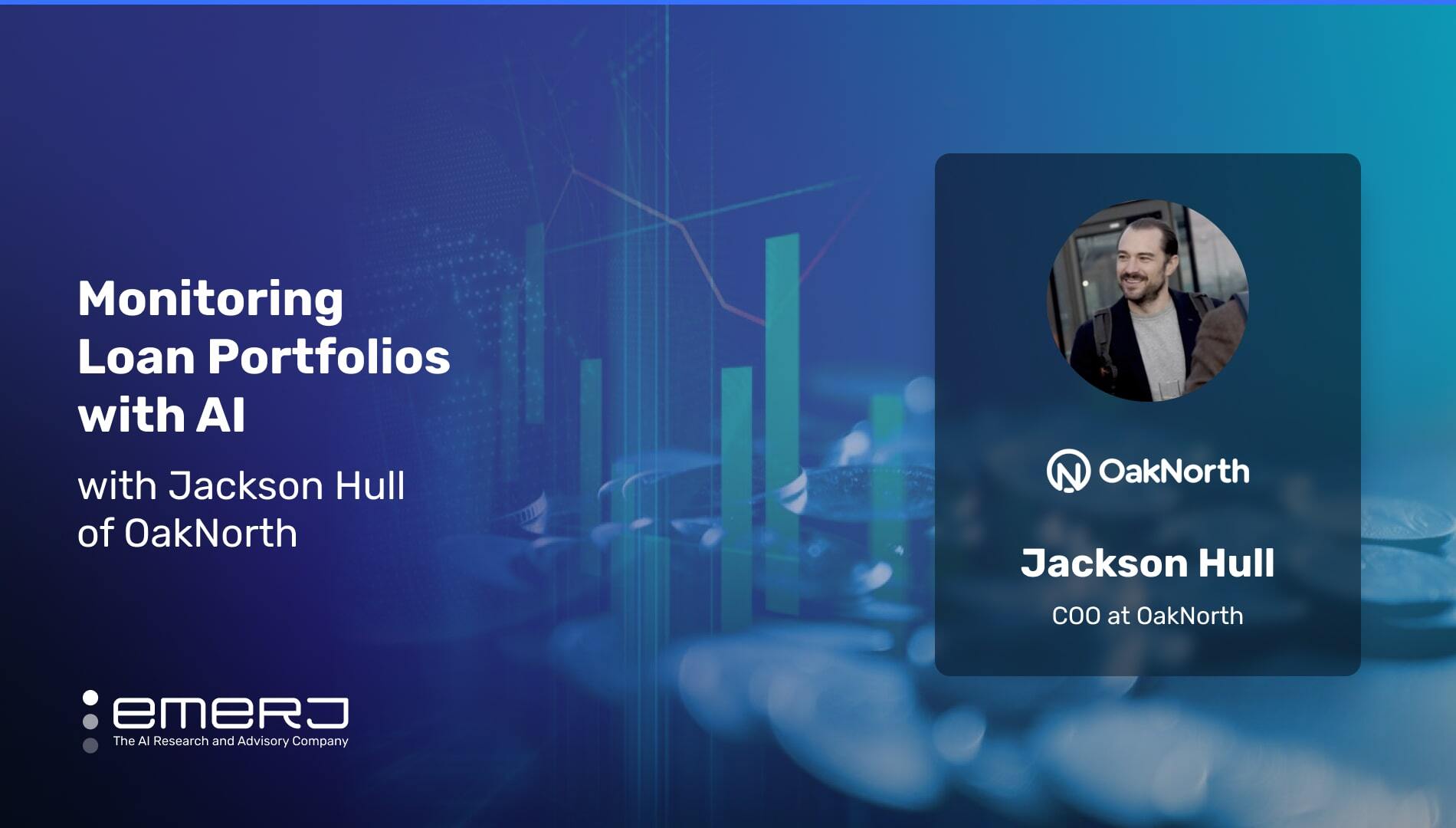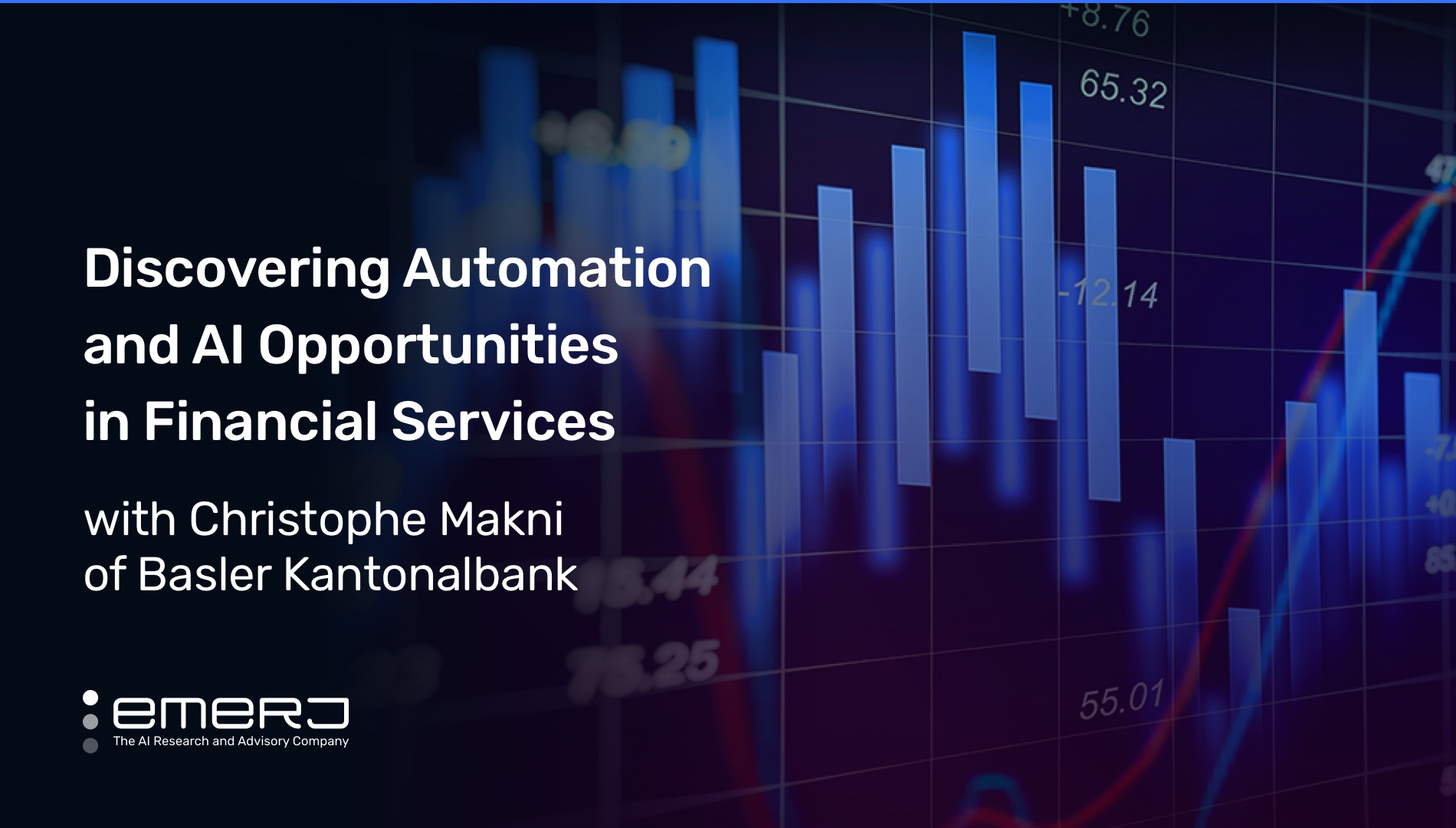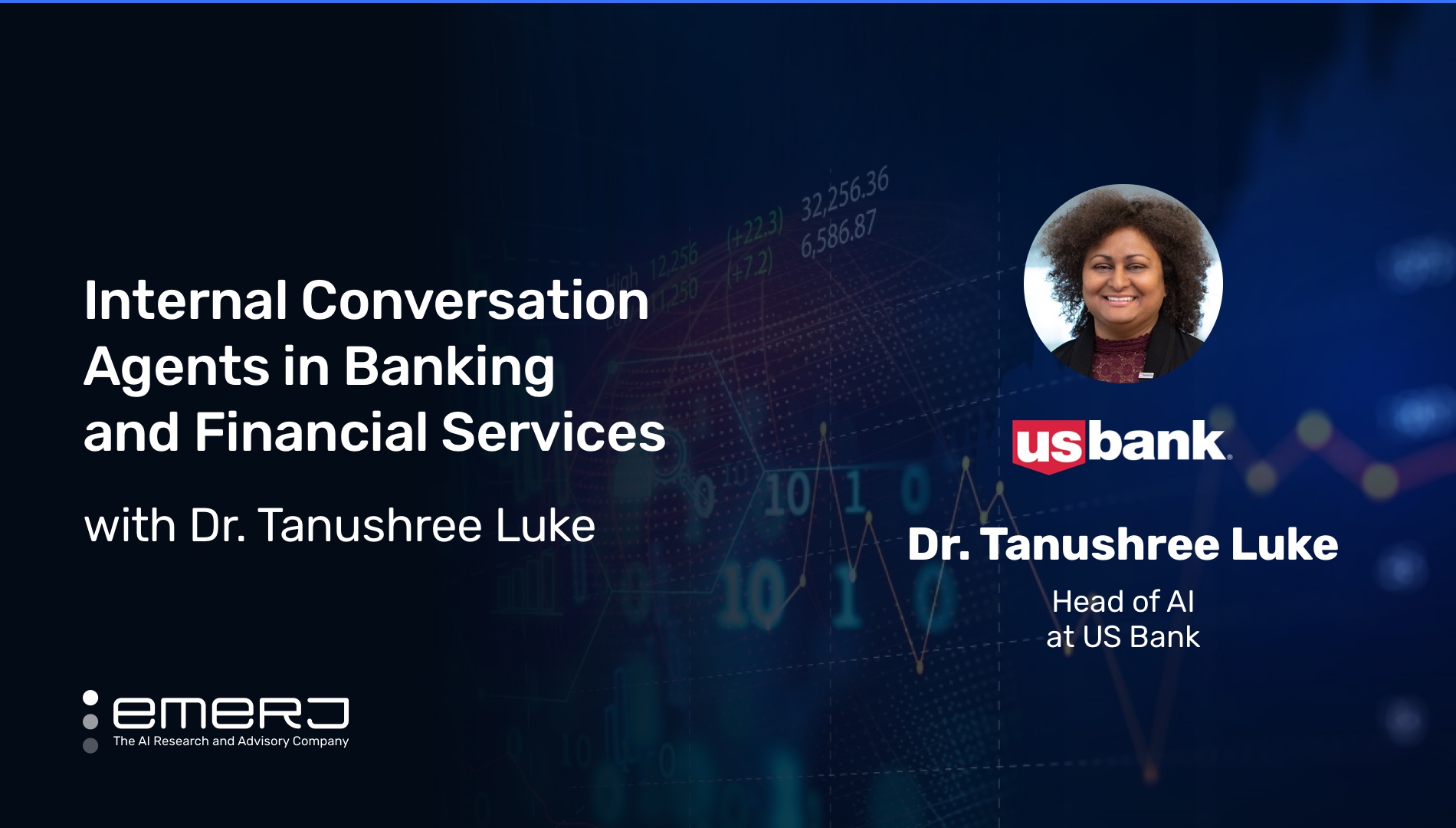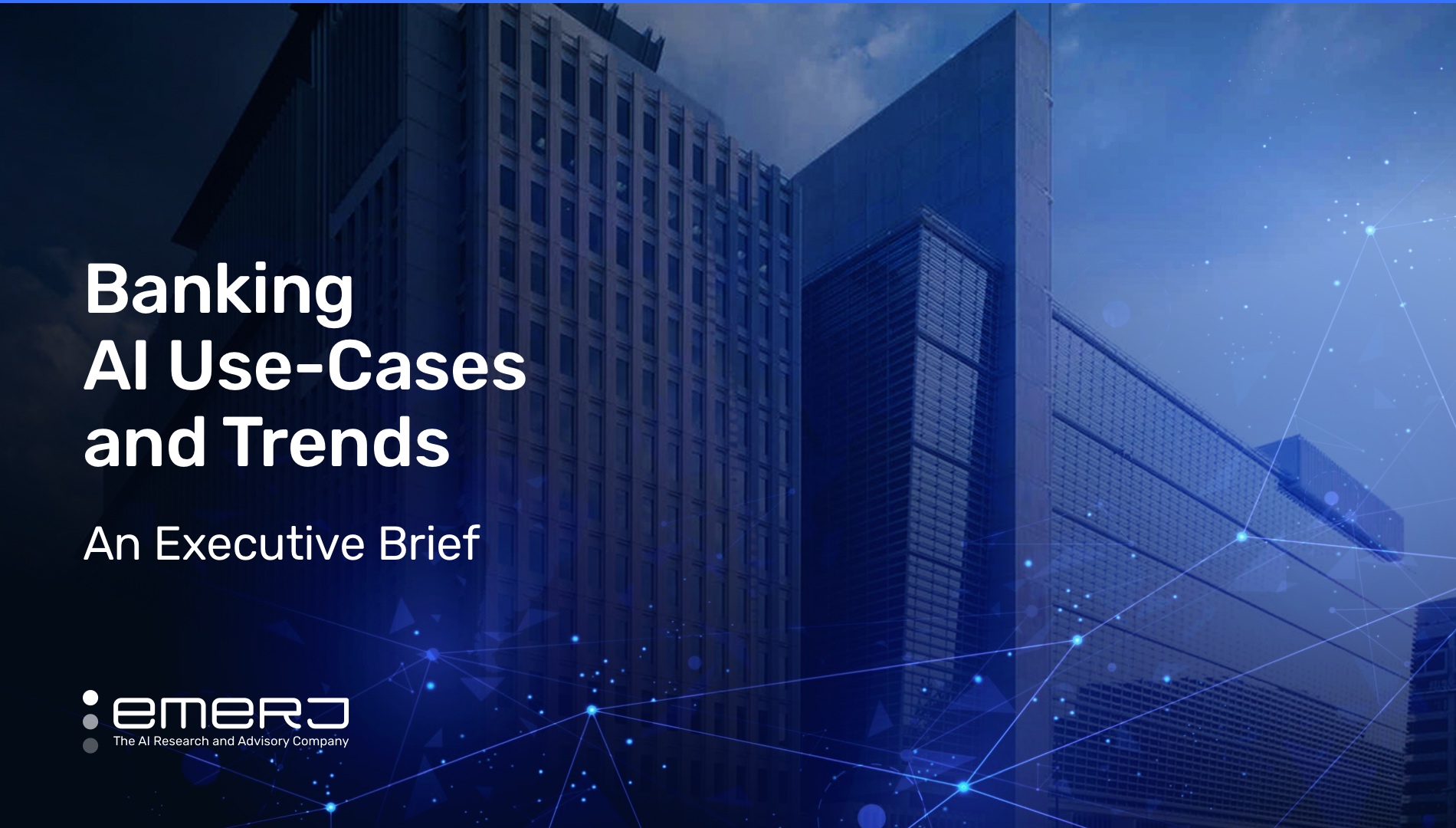Monitoring Loan Portfolios with AI – with Jackson Hull of OakNorth
As of 2023, AI and machine learning are widespread technologies in various applications and use cases throughout the financial services industry. Both demand factors in profitability needs, competition, and regulations – along with supply factors, such as technological advances and the availability of financial sector data – are primary drivers of adoption for these technologies.
Investment in AI by banks and financial service institutes for risk-related functions such as fraud, compliance, and lending has grown dramatically compared to customer-facing operations in the last few years. In lending, AI systems can help banks make sense of customer data to process loan applications faster, assess the creditworthiness of an individual or a corporate, and analyze credit risk.
Emerj CEO and Head of Research Daniel Faggella recently spoke with OakNorth’s then-COO Jackson Hull on the AI in Financial Services podcast. (He has since departed to serve as the CEO of Elliptic.) In the following analysis of their conversation, we examine two key insights on how AI capabilities are transforming how banks manage and approve loans:
- Cultivating macroeconomic and financial data: Leveraging predictive analytics and AI to provide a macro view of the markets that help the banks prepare for supply-side shocks.
- Building dashboards that inform meaningful predictions: Providing relationship managers with a 360-degree view of global industrial sectors to improve their portfolio forecasts.
Listen to the full episode below:
(Add the link to the published podcast)
Guest: OakNorth COO- Jackson Hull
Expertise: Machine learning and blockchain
Brief Recognition: Jackson is experienced in software engineering and product management, including machine and deep learning, big data, web and mobile applications, blockchain, and hardware/IoT. He has managed P&Ls at private and public companies and built and managed engineering, product, design, operations, digital marketing, risk, compliance, cyber, and infosec teams.
Cultivating Macroeconomic and Financial Data
Jackson begins by describing for Emerj’s audience how banks and financial institutions are organized to perform credit underwriting and analysis.
As he describes the process – bank relationship managers look at the portfolios, create and maintain records in excel, and manually collect information about the borrower’s history, information about the business, and company personnel. All the data is then collated into a credit report and submitted to the credit committee.
Jackson adds that the above process of collating information is intensive and cumbersome, such that most banks will miss it. If done manually, gathering all the required information to create a credit report takes 40 days in the US. On the approval of the credit report by the credit committee, the monitoring team performs an annual review.
However, according to Jackson, reviewing the financial health of client portfolios once a year can potentially miss the indicators or early warning signs:
“It is an intensive and long process. The manual process takes, on average, 40 days in the USA from start to finish. Once the credit committee approves the report, the credit monitoring team performs an annual review. Reviewing the financial health once a year can potentially miss the indicators or early warning signs.”
– COO of OakNorth, Jackson Hull
With AI, financial institutions can make credit analysis more efficient and accurate. While Jackson is very clear that AI can not solve every problem, it significantly reduces the turnaround time.
The large-scale monitoring of industrial sectors possible with machine learning and sizeable global sector data sets enables banks to minimize credit losses by maintaining a proactive and ongoing underwriting view of their whole loan book rather than just at origination and annual review. On their own, even the largest banks are not built in a way to capture the big-picture insights that come from mass data collection and aggregation.
AI-based platforms have the capability today to look at the data points that indicate strong correlation and causation to revenue, costs, and order volumes. Jackson tells Emerj that OakNorth’s platform has organized the global economy in 275 sub-sectors, indicating a strong correlation and causation to revenue, costs, and order volumes.
While working with its clients, OakNorth has been able to pull together the data of 122,000 loans and 60,000 private companies to provide the bigger picture, macro-level data. In gathering and synthesizing this information holistically, they offer a forward perspective on a potential business loan applicant’s performance in a given sector.
Because these data are gathered in real-time, the AI capabilities they drive can also help lenders manage risk with:
- Continuous monitoring to predict the borrower’s financial positions and industry-related risks.
- Showing the borrower’s cash and financial position.
While these capabilities are focused on the specific lender-borrower relationship, Jackson emphasizes that the main appeal of these new AI-driven capabilities is to identify:
- The macroeconomic variables that have the most significant impact on the loan books.
- The industries and borrowers that contribute the most to the changes in performance.
Based on the anticipated macro-economic shifts, relationship managers can then:
- Take preventive actions allowing them to continue confidently lending to their clients.
- Make informed decisions about the risks and opportunities in their loan book.
Explaining with the help of past examples, Jackson tells Emerj that, when COVID first struck, the banks took time to realize how the credit market was changing. While a big hit to restaurants and the hospitality industry were the initial outcomes, many drivers and factors impacted the financial position of borrowers in other sectors as well.
In retrospect, banks are realizing that the technologies that have emerged since the pandemic could play a critical role in preparing for the next financial crisis. Jackson tells Emerj that – had such AI solutions been available at the onset of COVID-19 – they could have “sliced and diced the portfolio and shown the bank, with a heatmap, the riskiest of credit [situations]” so the bank can analyze and prioritize its efforts.
Building Dashboards That Inform Predictions
Regarding prioritizing data visualizations in dashboards, Jackson insists that relationship managers should be able to see early warning alerts starting with some sector change. For instance, if there is a spike in oil and gas price today, the alerts should go to every company which could be impacted by this change in price in the manufacturing or production sector.
Explaining with an example, Jackson says if there is a new event happening with a specific client – such as the revenue going up or they are going through a tricky situation – the dashboard will indicate the news to the loan manager. The credit analyst will know where there could be an opportunity to offer the client more debt financing.
Citing OakNorth’s flagship product, Jackson describes dashboards where credit analysts can look at specific drivers in global industrial sectors and sub-sectors. He further mentions that, currently, commercial lending operates in an annual cycle. The analysis usually happens annually, but banks can do that analysis monthly or quarterly with AI.
“Banks have relationship managers responsible for maintaining the professional relationship with the existing business portfolio. With dashboards, they stay armed with a lot of information about the sector.”
– COO of OakNorth, Jackson Hull
Given his experience developing such data visualizations, Jackson insists that when a relationship manager logs in to the dashboard, it should give insight and indicate which client to prioritize in future communications.
Whether it’s because the client is at risk because of new rules or a change in the prices of raw materials, the ideal dashboard – in Jackson’s eyes – will tell them how these changes can put both the client and the bank at risk. The relationship manager can then confidently walk into their borrowers’ office and initiate the conversation by mentioning that the aluminum prices are up or the steel prices are spiking.
Jackson emphasizes that dashboards with compelling data visualizations provide macroeconomic awareness and insights to banks they simply didn’t have before. It hints if they are at too much risk or overexposed themselves.
However, the point of these visualizations is not to automate predictions and forecasts for relationship managers but rather to prioritize the most critical information so they can decide how to plan ahead. “It’s not about answering the question definitively,” Jackson specifies. “It’s about getting comfort, getting perspective, and really creating that 360-view with forward-looking projections.”







